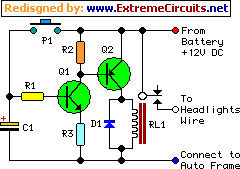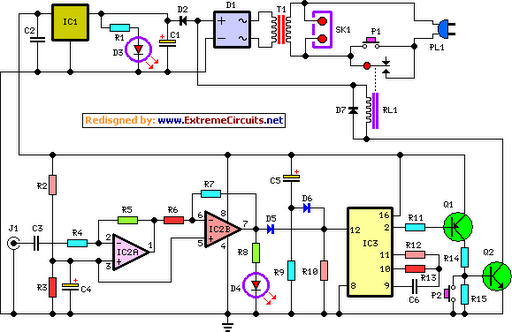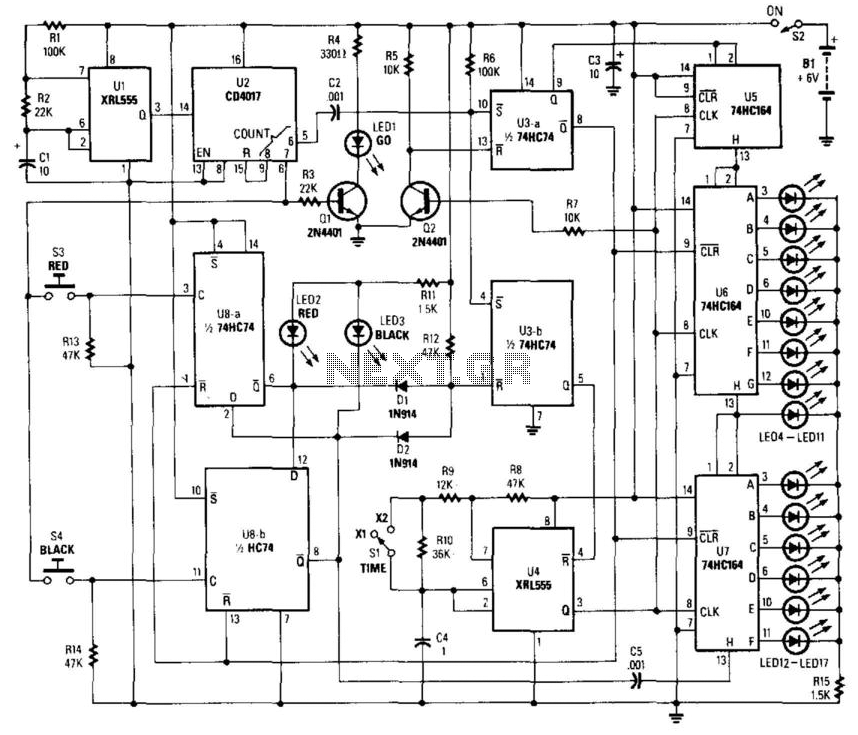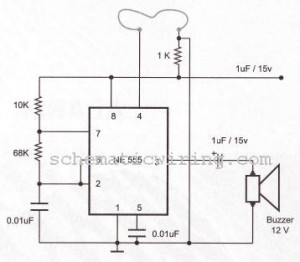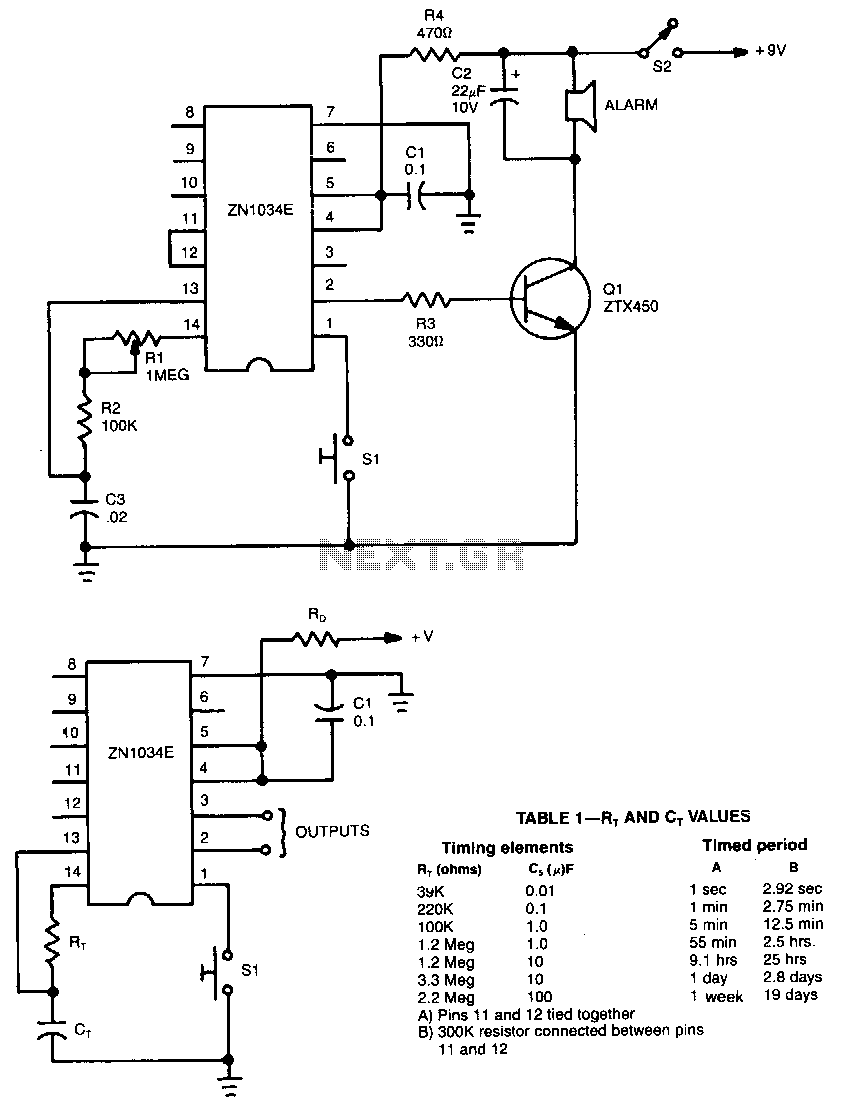
Repeating Timer 4
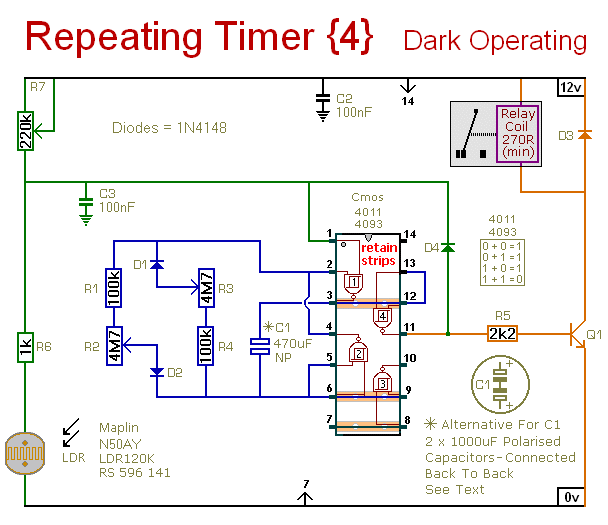
This circuit is the inverse of Repeating Timer No. 3. Its operation can be restricted to nighttime hours. The variable resistor (preset) allows selection of the darkness level at which the timer will activate.
The described circuit functions as a light-activated timer, designed to operate only during periods of low ambient light, such as nighttime. The core of the circuit is a light-dependent resistor (LDR) or phototransistor, which senses the intensity of light in the environment. When the light level falls below a predetermined threshold, set by the variable resistor, the timer circuit is triggered to initiate its operation.
The variable resistor, often referred to as a potentiometer, plays a crucial role in adjusting the sensitivity of the circuit. By altering its resistance, the user can fine-tune the darkness level required to activate the timer. This feature enhances the circuit's versatility, allowing it to be used in various applications, such as automatic outdoor lighting systems, security lighting, or garden lights that only turn on at dusk.
The circuit may include additional components such as a microcontroller or timer IC (e.g., 555 timer) to control the timing duration after activation. The output can be connected to a relay or transistor switch, which in turn controls the power to the load, such as a lamp or other lighting fixtures. The design ensures that the load remains off during daylight hours, thereby conserving energy and extending the lifespan of the lighting components.
In summary, this circuit effectively utilizes a light sensor and adjustable resistance to create a timer that operates exclusively during darkness, making it a practical solution for automated lighting control.This circuit is the opposite of Repeating Timer No.3. Its operation can be limited to the hours of darkness. Again - the variable resistor (preset) lets you choose the level of darkness at which the timer will begin to function.. 🔗 External reference
The described circuit functions as a light-activated timer, designed to operate only during periods of low ambient light, such as nighttime. The core of the circuit is a light-dependent resistor (LDR) or phototransistor, which senses the intensity of light in the environment. When the light level falls below a predetermined threshold, set by the variable resistor, the timer circuit is triggered to initiate its operation.
The variable resistor, often referred to as a potentiometer, plays a crucial role in adjusting the sensitivity of the circuit. By altering its resistance, the user can fine-tune the darkness level required to activate the timer. This feature enhances the circuit's versatility, allowing it to be used in various applications, such as automatic outdoor lighting systems, security lighting, or garden lights that only turn on at dusk.
The circuit may include additional components such as a microcontroller or timer IC (e.g., 555 timer) to control the timing duration after activation. The output can be connected to a relay or transistor switch, which in turn controls the power to the load, such as a lamp or other lighting fixtures. The design ensures that the load remains off during daylight hours, thereby conserving energy and extending the lifespan of the lighting components.
In summary, this circuit effectively utilizes a light sensor and adjustable resistance to create a timer that operates exclusively during darkness, making it a practical solution for automated lighting control.This circuit is the opposite of Repeating Timer No.3. Its operation can be limited to the hours of darkness. Again - the variable resistor (preset) lets you choose the level of darkness at which the timer will begin to function.. 🔗 External reference
